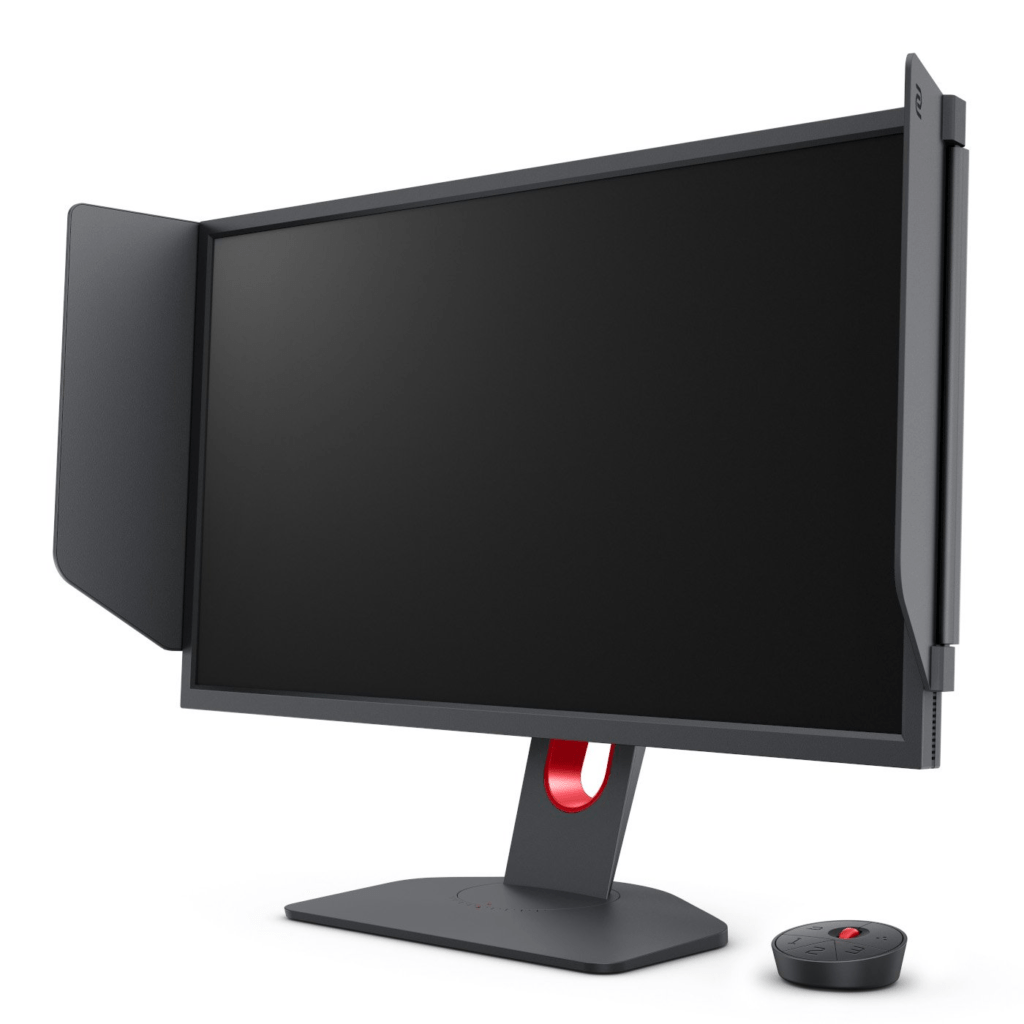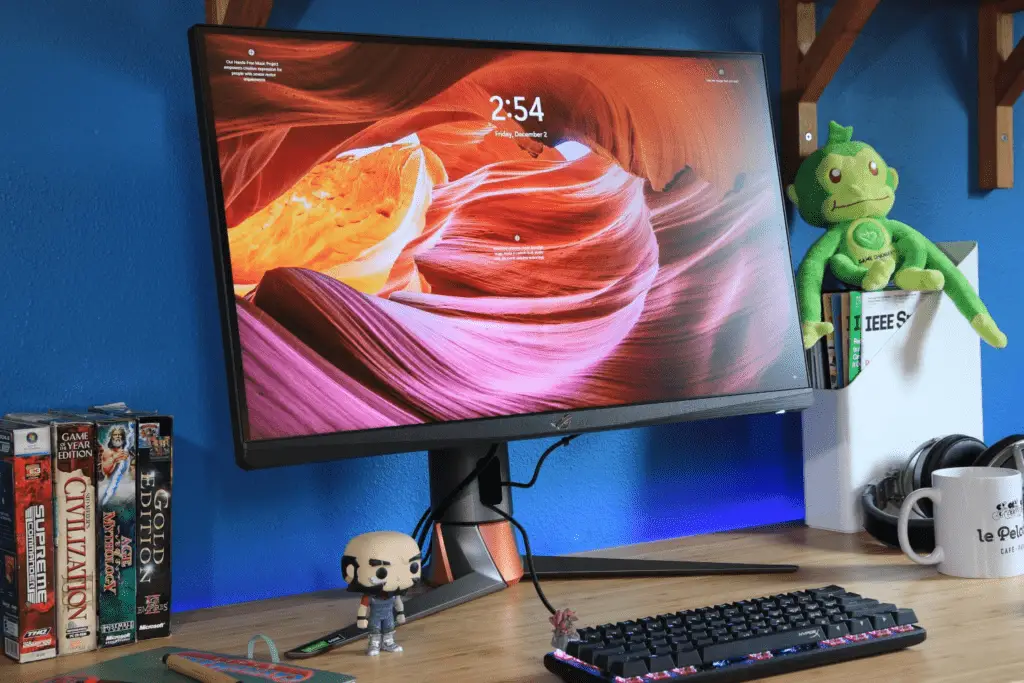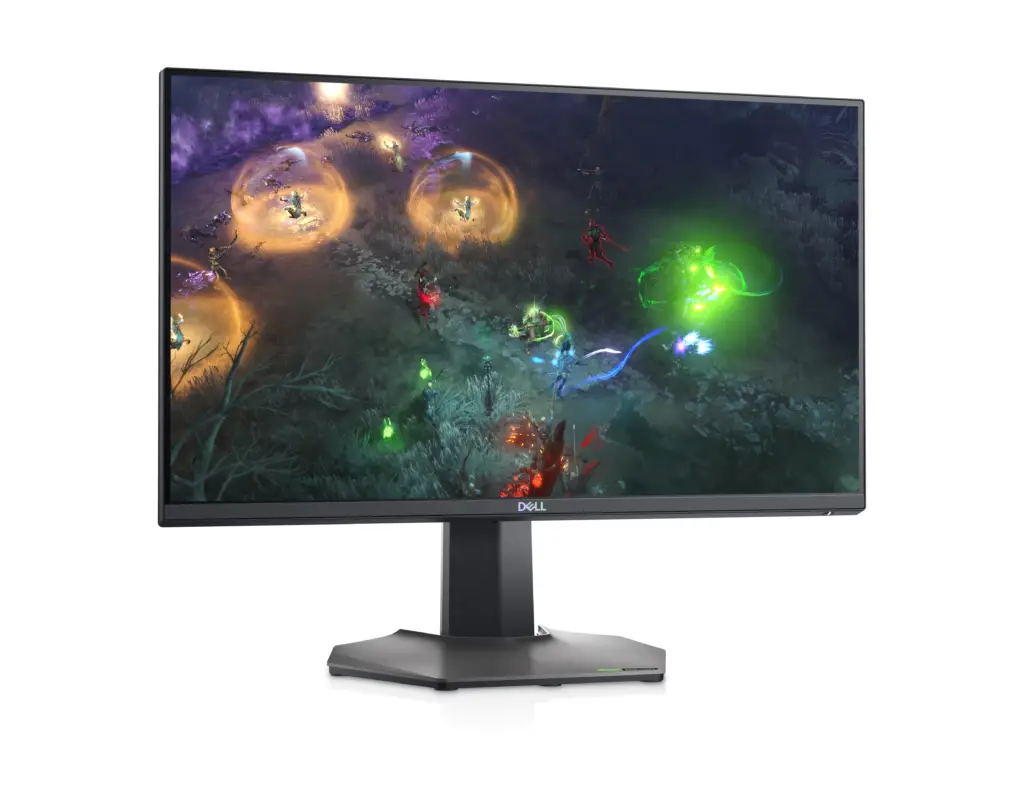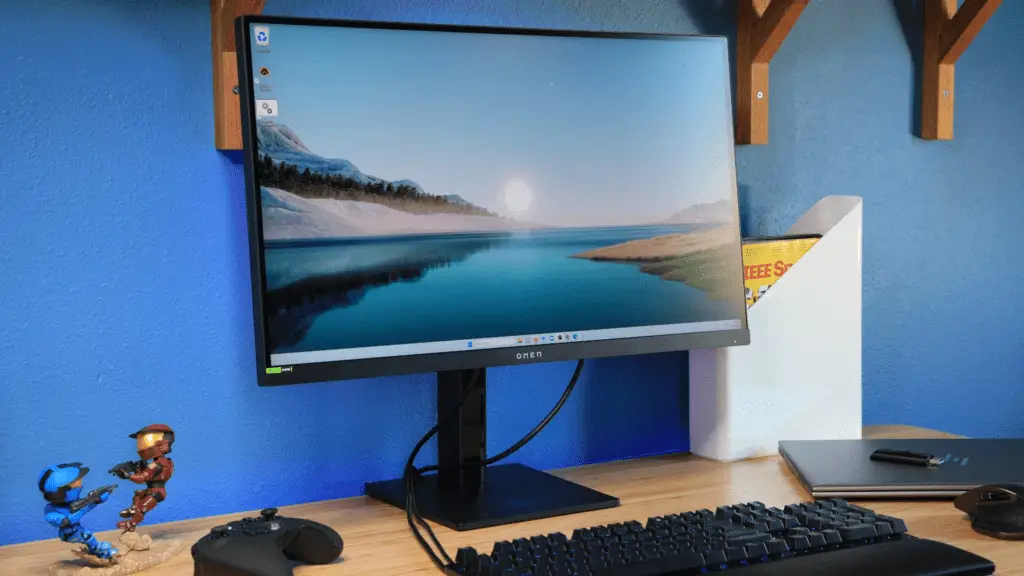Discover the gaming advantage: Explore the differences between 240Hz and 360Hz monitors and make an informed choice for your ultimate gaming experience.
Higher refresh rates result in smoother performance and lower input lag, which makes for a more responsive gaming experience—as long as your frame rate can keep up with the higher refresh rate.
360Hz vs 240Hz Monitors
Although most people won’t notice a difference between 240Hz and 360Hz unless both displays are placed near each other, 360Hz is the better option if you want to maximize your advantage and increase performance.
Comparably, jumping from 60 Hz to 240 Hz or 360 Hz is more apparent than going from 144 Hz to 240 Hz. Your gaming experience will be much improved if you upgrade your 60Hz monitor.
The number of times the monitor refreshes the screen determines the technical difference between the two: a 240Hz monitor can refresh the screen 240 times per second with a 4.17 ms time between frames, and a 360Hz monitor can do the same 360 times with a 2.78 ms lag between frames.
You should make sure the monitor can meet your expectations before upgrading to a quicker one. In addition to having a fast refresh rate, an esports monitor should ideally have a low response time of 1 ms. In order to eliminate screen tearing, the monitor should support AMD FreeSync or Nvidia Gsync if you are a casual gamer and play a lot of single-player games. A HDR display would also enhance the visual beauty of games.
To get the most out of the display, make sure your PC can run games at a FPS higher than the refresh rate of your monitor. It will be feasible to upgrade the PC over the monitor if your PC isn’t able to force games to run at the desired frame rate.
Purchasing a monitor with the desired resolution is also crucial. As of right now, a 360Hz monitor can only handle 1080p resolution; in contrast, a 240Hz monitor can support up to 2K resolution, and the highest resolution is supported by 144Hz monitors. As a result, if your resolution requirements outweigh your refresh rate requirements, a 360 Hz monitor may not be the best choice.
1080p 360Hz Gaming Monitors

BenQ Zowie XL2566K
- Screen Size: 25 Inches
- Resolution: 1920 x 1080 Pixels
- Special Feature: Tilt Adjustment
- Refresh Rate: 360 Hz
Consider the BenQ Zowie XL2566K if you aim for the utmost smoothness in gaming performance, and your PC can consistently produce over 360FPS or close to it. This monitor features a TN panel with rapid pixel response times, minimal input lag, and an excellent DyAc+ MBR (Motion Blur Reduction) implementation. DyAc+ effectively enhances motion clarity through backlight strobing, minimizing perceived motion blur.
Notably, DyAc+ excels by maintaining brightness levels, functioning at the maximum refresh rate, and introducing minimal visual artifacts. The XL2566K includes competitive FPS gaming features like a shielding hood, S. Switch device for rapid remote OSD adjustments, and XL Settings To Share. F

Acer Nitro XV252Q
- Screen Size: 24.5 Inches
- Resolution: 1920 x 1080
- Special Feature: Backlit
- Refresh Rate: 360 Hz
Alternatives Other noteworthy 1080p 360Hz monitors to explore include the Acer XV252QF and the Aopen 25XV2QF (essentially the same monitor as the XV252QF but under a different brand). These models can even overclock to 390Hz and have an efficient MBR implementation with minimal brightness trade-offs. However, they employ an IPS panel with a somewhat slower pixel response time, affecting overall motion performance. If MBR is not a priority and you seek 360Hz for low input lag, consider options like the Dell AW2521H or AW2523HF, as mentioned in the review.
1440p 360Hz Gaming Monitors

ASUS PG27AQN
- Screen Size: 27 Inches
- Resolution: 2560 x 1440 Pixels
- Special Feature: High Dynamic Range
- Refresh Rate: 144 Hz
The ASUS PG27AQN is a prominent choice for competitive FPS gaming, featuring a 27″ 1440p 360Hz IPS panel. It utilizes AUO’s UltraFast Dual-Layer Voltage Driver IPS panel and incorporates NVIDIA’s ULMB2 backlight strobing technology. While its pixel response time performance is similar to the XL2566K, its MBR implementation exerts a more substantial impact on brightness and may produce minor red fringing artifacts.
The higher resolution significantly enhances image sharpness, and the wide 98% DCI-P3 color gamut delivers more vibrant colors, aiding enemy visibility in specific environments. Additionally, the 1440p resolution, coupled with the IPS panel’s color accuracy and consistency, renders the PG27AQN suitable for uses beyond competitive FPS gaming. However, it’s worth noting that some users may find 27″ screens too large for professional FPS gameplay, and maintaining 360FPS requires a high-end GPU.
1080p 240Hz Gaming Monitors
For those seeking a 1080p 240Hz display, we recommend ViewSonic XG2431, featuring the Blur Busters Approved 2.0 backlight strobing technology.

ViewSonic XG2431
- Screen Size: 24 Inches
- Resolution: 1080 Pixels
- Brand: ViewSonic
- Refresh Rate: 240 Hz
Alternatively, if you’re not keen on MBR, you can find excellent 1080p 240Hz gaming monitors for as low as $250, such as the Dell S2522HG or the LG 27GP750.

Dell S2522HG
- Screen Size: 24.5 Inches
- Resolution: FHD Pixels
- Refresh Rate: 240 Hz

LG 27GP750
- Screen Size: 27 Inches
- Resolution: 1920 x 1080 Pixels
- Refresh Rate: 240 Hz
1440p 240Hz Gaming Monitors

HP Omen 27qs
- Screen Size: 27 Inches
- Resolution: 2560×1440
- Refresh Rate: 240 Hz
Consider a 1440p 240Hz 1ms monitor like the HP Omen 27qs. This monitor employs an IPS panel with a wide color gamut, resulting in more saturated and vibrant colors.
240Hz vs 360Hz Monitor
| Feature | 240Hz Monitor | 360Hz Monitor |
|---|---|---|
| Refresh Rate | 240Hz | 360Hz |
| Frame Interval (ms) | 4.17 | 2.78 |
| Gaming Advantage | Enhanced performance | Maximum advantage for competitive |
| Ideal Use Case | Competitive gaming, fast-paced FPS | Esports, ultra-competitive gaming |
| Response Time | Typically 1ms | Typically 1ms |
| Screen Tearing | Supports adaptive sync (G-Sync/Freesync) | Supports adaptive sync (G-Sync/Freesync) |
| Resolution Support | Up to 2K (varies by model) | Typically 1080p |
| PC Requirements | Capable of high FPS gaming | Requires a powerful PC |
| Price Range | Varies based on model and features | Typically higher-end and costly |
240Hz vs 360Hz: Which Refresh Rate Should I Choose?
A 360-Hz gaming monitor is worth considering if your PC system can maintain more than 240 frames per second.
Although there isn’t much of a difference between 240Hz and 360Hz, if you’re an experienced gamer who wants to compete, it’s worth the money because every millisecond matters.
Conclusion
As previously mentioned, there is not much of a difference between 240Hz and 360Hz, but there is a significant difference between 1080p resolution on a roughly 24-inch monitor and 1440p resolution on a 27-inch display. As a result, many gamers will choose the sharper and clearer image quality of 1440p over the advantages of 360Hz over 240Hz.
Remember that achieving 240 frames per second at 1440p is more demanding than achieving 360 frames per second at 1080p, so regardless of your choice, make sure to verify your CPU and GPU benchmarks for your preferred games.
You should also see if the games you play have a fixed frame rate. For example, several people encounter specific problems while trying to run Apex Legends at a frame rate higher than 190. Thus, while a 360Hz monitor would be meaningless in this situation, 240Hz would still have certain advantages above 144Hz.


